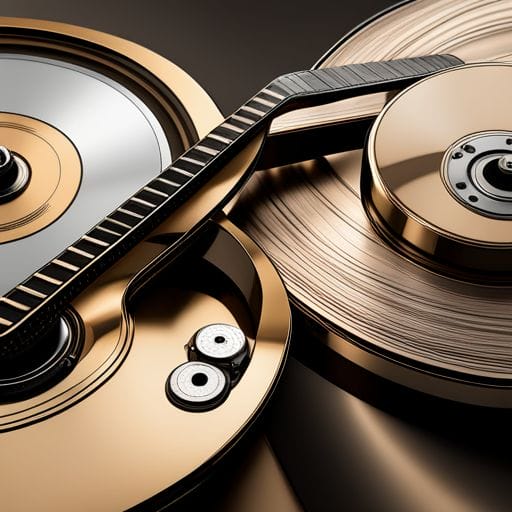Mastering for CD: Optimizing Your Mix for Physical Release

What steps are involved in the optimization of a mix for a physical CD release?
Releasing your music on a physical medium such as a CD is a commendable achievement for any musician. But this comes with some intricate details, primarily in the mastering process. Ever wondered why the same mix sounds different in various formats? The answer lies in mastering, a crucial step in the production chain that tailors your mixes for the destined medium — in this case, a CD.
Understanding CD Mastering
Mastering for CD involves fine-tuning audio mixes to achieve the best possible sound on the CD format. It’s about creating a fine balance across tracks, ensuring they behave optimally in a wide range of playback systems. Think of it as a final polish that makes your mixes sound consistent, professional, and as good as possible when played on a CD player.
Steps in Mastering for CD release
- Auditing the Mix: Before you begin mastering, it is important to review the final mix critically. Make sure that the audio content is in harmony in terms of the mix, EQ, volume, dynamics, and panning. These little details contribute significantly to how well the mastering process will turn out.
- Balancing Frequencies: The next step is to ensure that your frequencies are well balanced. Each track should exhibit a full frequency sound (20-20,000Hz). The process also calls for eliminating unwanted frequencies that might have an adverse impact on the overall sound.
- Dynamics Processing: Depending on the genre of your music, you might want to add compression or limiting to your tracks. Maximizing the loudness is important but beware of over-compressing as it can make your mixes sound lifeless.
- Stereo Imaging: Proper stereo imaging can make your mixes sound wider and more immersive. Attention to detail can improve the listener’s experience and add to the stereo depth of your mixes.
- Dithering and Conversion: Finally, your mixes will be dithered and sample rate converted to 44.1kHZ/16 bit to align with the standard settings for audio CDs.
Mastering Tools
In the digital age, you have a multitude of tools to make the mastering process simpler and more refined:
- Equalizers (EQ): EQs are used to balance frequencies, suppress unwanted noise, and amplify desired tonal qualities.
- Compressors: Compressors control the dynamic range of your mix, ensuring optimal loudness without distortion or clipping.
- Limiters: Limiters serve as a safety net, stopping your mix from distorting when played at high volumes.
- Imagers: Stereo imagers can manipulate the stereo width of your mix, enhancing the sense of space and dimension.
- Dither: Dithering adds a level of noise to your master, averting unwanted distortion during the conversion to 16 bit for CD release.
Some Useful Tips
Last but not least, here are some useful tips for mastering your mix:
- Always trust your ears.
- Maintain a consistent monitoring level.
- Take frequent breaks to avoid ear fatigue.
- Monitor your mix on multiple playback systems.
- Don’t rush. Mastering is a critical process that requires patience and precision.
Conclusion
Mastering for a CD release is all about understanding the medium’s unique requirements and making sure your mixes are appropriately tailored. It might seem like a challenging process, but with the right tools and knowledge, you can ensure that your music sounds just as incredible on a CD as it did in the studio.
